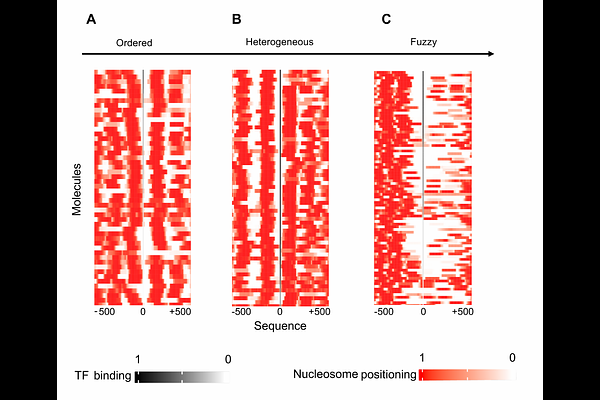Biophysical Modeling Uncovers Transcription Factor and Nucleosome Binding on Single DNA Molecules

Biophysical Modeling Uncovers Transcription Factor and Nucleosome Binding on Single DNA Molecules
Dalakishvili, L.; Managori, H.; Bardet, A.; Slaninova, V.; Bertrand, E.; Molina, N.
AbstractGene regulation in eukaryotes emerges from a dynamic interplay between transcription factors (TFs), nucleosomes, and RNA Polymerase II (Pol II), whose competitive and cooperative binding shapes DNA accessibility and transcriptional output. Single-molecule footprinting (SMF) and long-read chromatin accessibility assays such as Fiber-seq now capture these interactions at nucleotide resolution on individual DNA molecules. However, existing computational tools remain insufficient to decode complex binding events from sparse methylation data. Here, we introduce HiddenFoot, a probabilistic modeling framework based on statistical mechanics that quantitatively infers TF, nucleosome, and Pol II occupancy profiles on single DNA molecules by systematically evaluating all thermodynamically plausible binding configurations. Applying HiddenFoot to SMF and Fiber-seq data from mouse, Drosophila, and human cells, we recovered known TF footprints, precisely resolved Pol II pausing, and identified extensive heterogeneity in nucleosome positioning driven by TF binding. HiddenFoot further distinguishes direct TF--TF cooperativity from nucleosome-mediated co-dependency by estimating pairwise interaction energies and comparing to null models under equilibrium. By integrating biophysical modeling with high-resolution single-molecule data, HiddenFoot offers a general, interpretable framework for dissecting regulatory logic in native chromatin with base-pair precision.